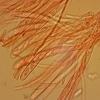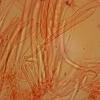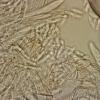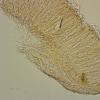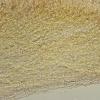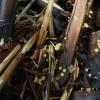
27-04-2013 09:22
 Maren Kamke
Maren Kamke
Hello, Another find this time on Phragmites sp.

28-04-2013 09:52
 Nicolas VAN VOOREN
Nicolas VAN VOOREN
Bonjour.Je suis à la recherche de l'article suiva

27-04-2013 00:22
 Joop van der Lee
Joop van der Lee
The fruitbody is a ball shaped fruitbody fully cov
Hymenoscyphus sp
Gilles Corriol,
28-04-2013 17:14
 Récolte récente (GC13042408), sur tige de Filipendula ulmaria, avec réactifs orthodoxes !
Récolte récente (GC13042408), sur tige de Filipendula ulmaria, avec réactifs orthodoxes !Je sèche.
Spores 9,6-13,6 x 3,3-4,1 µm, à gouttes poliares x 1-1,5 µm, non septées, non scutulloïdes, sans appendices.
Asques environ 80x7 µm, bouclées, I+.
Paraphyses filiformes, x 2 µm.
Textura prismatica.
Merci d'avance pour vos pistes !
Hans-Otto Baral,
28-04-2013 18:22

Re : Hymenoscyphus sp
This should belong in the H. repandus aggregate. Nice croziers here, my H. repandus has mostly simple septate asci. But a few collections had croziers. Your spores are rather wide and resemble H. peruni, which is on wood and which has inamyloid asci.
So an interesting collection! Could you pleas ephotograph the living paraphyses? They should be multiguttulate at high refractivity.
Zotto
So an interesting collection! Could you pleas ephotograph the living paraphyses? They should be multiguttulate at high refractivity.
Zotto
Gilles Corriol,
29-04-2013 09:09

Re : Hymenoscyphus sp
They are ! (photo added)

